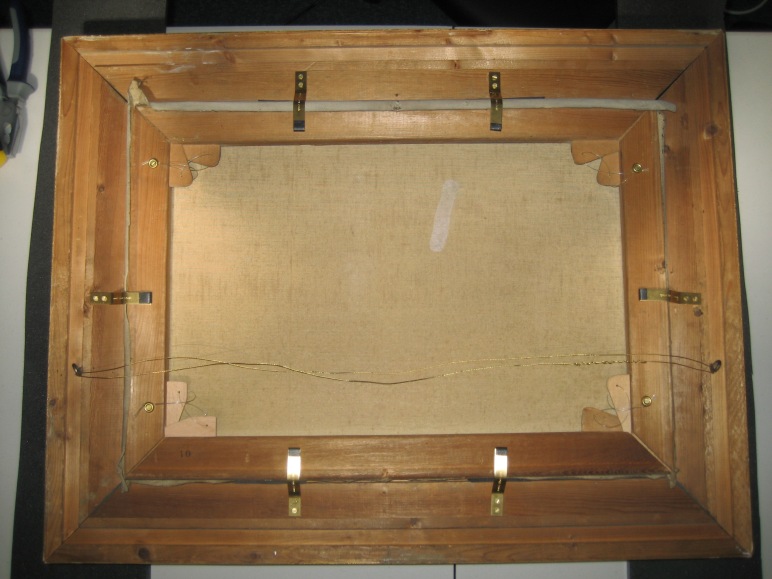My latest project is working with Gallery Oldham to conserve paintings from their collection that were damaged in a flood. The variation in severity of damage is vast, with some paintings really badly affected by direct contact with water, while others have been damaged by the humidity. I have taken some of the larger and more badly damaged paintings into my studio to work on over the coming months. For the smaller and less badly affected ones I have been working from a pop-up studio in the gallery while it is open.

I’ve worked in my pop-up studio twice, with my next visit booked in for the beginning of November. It’s a very different way of working for me, as I’m making assessments and then doing the remedial work straightaway. So far I’ve repaired a damaged frame, surface cleaned three pictures with adjusted water, consolidated a large, lifting paint flake, re-tensioned canvases, tied in stretcher keys and lined frame rebates. I’ve come across more nailed in pictures than I’d like, but I’m replacing the nasty things with brass strips. It’s been a challenge to make sure I have all of the right kit for carrying out such diverse treatments, but the joy of going back several times is that I can always pick something up next time.
A few people have passed by while I’ve been working but not many people have come to say hello. I think in the coming visits there will be some information about what it is that I’m doing, and I’m thinking of reorienting my little space to invite more interaction with visitors, which might help people feel less like they’re interrupting. So if you’re in Oldham on a Monday come and see if I’m working. If I’m not there it’s still well worth the visit.





